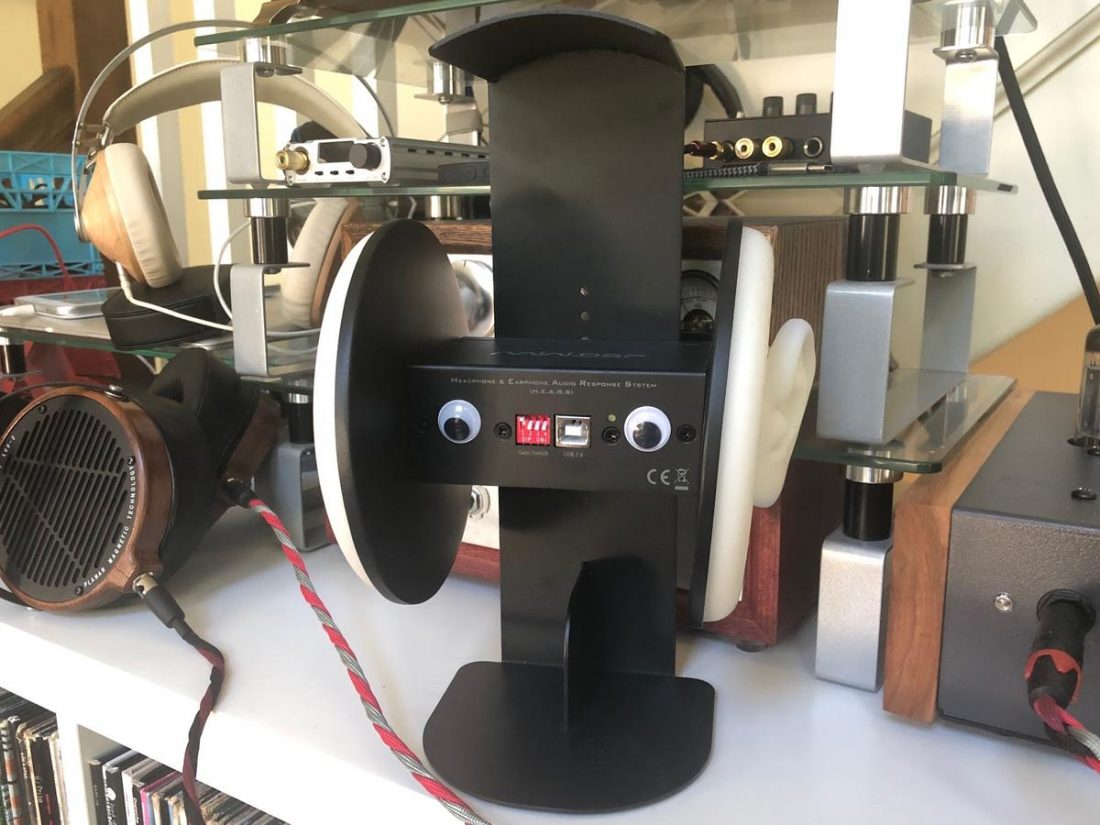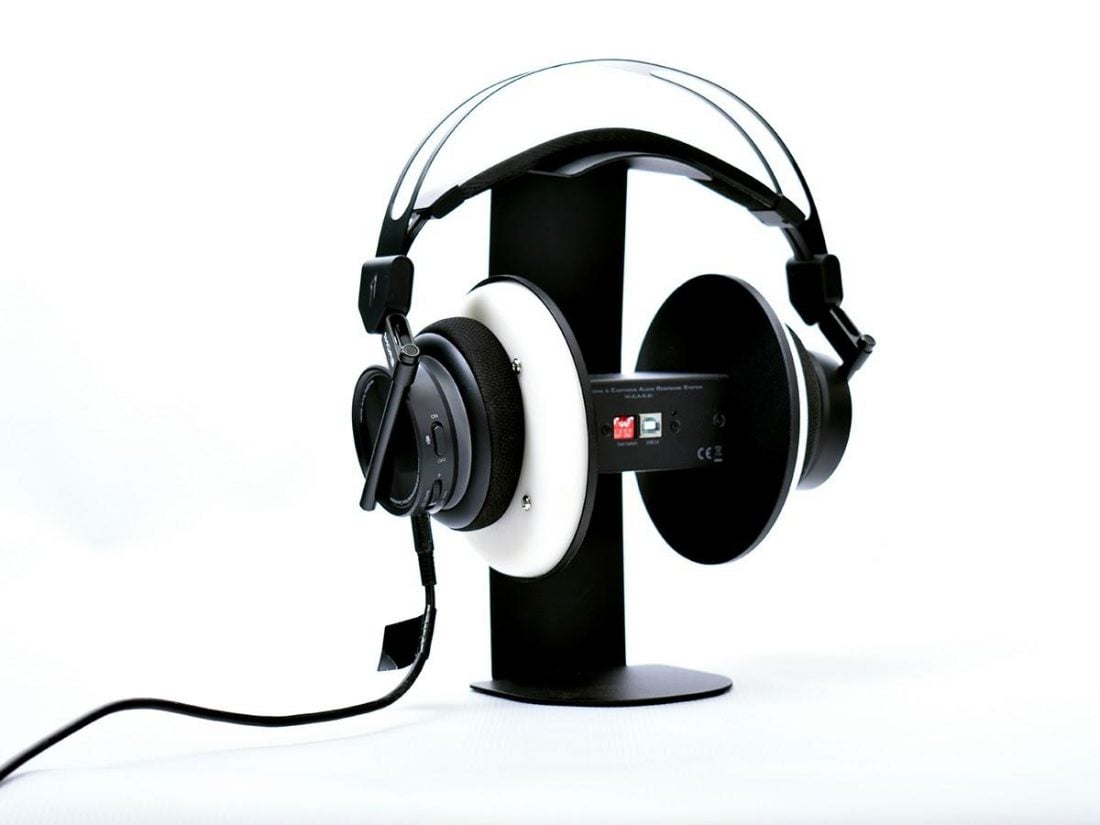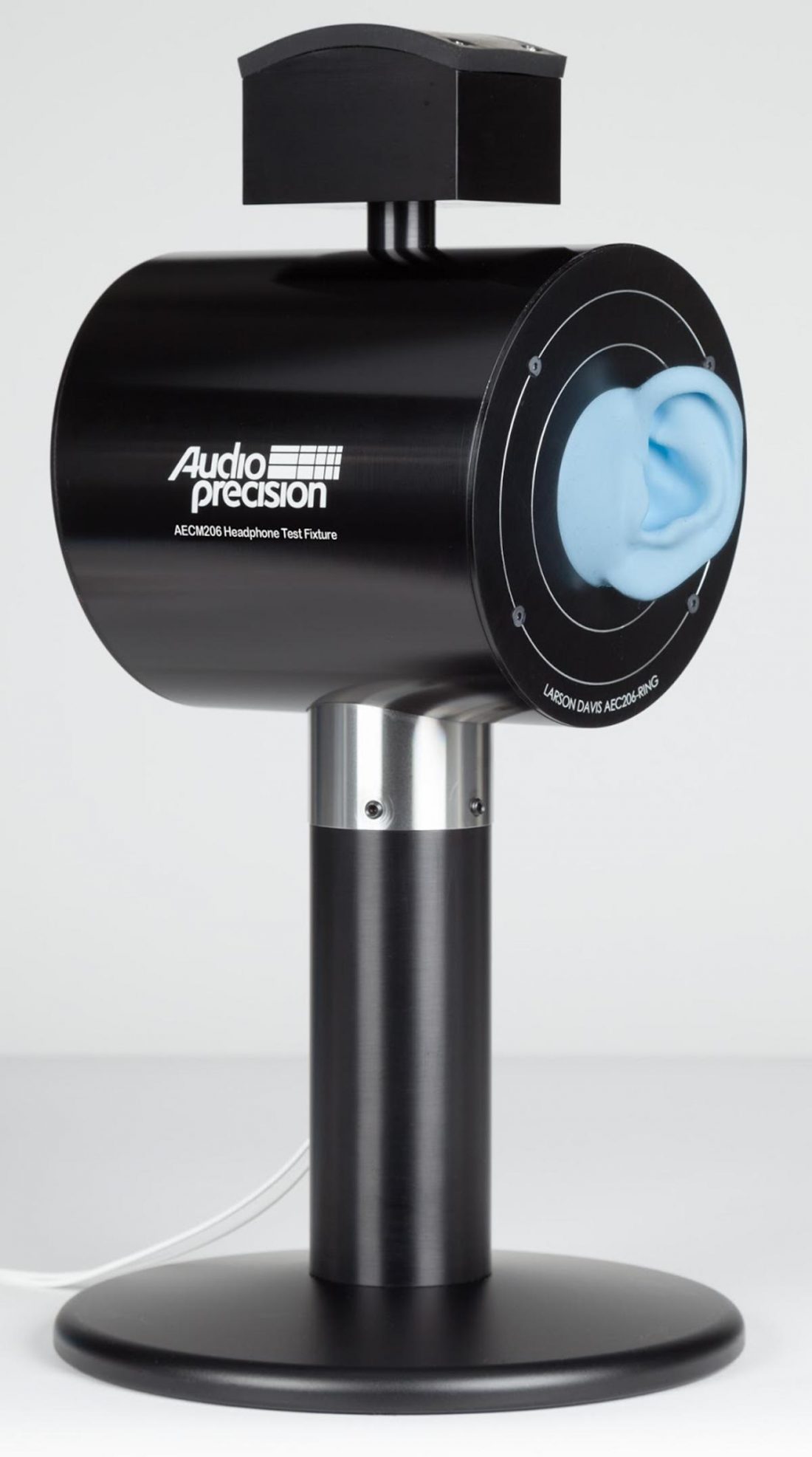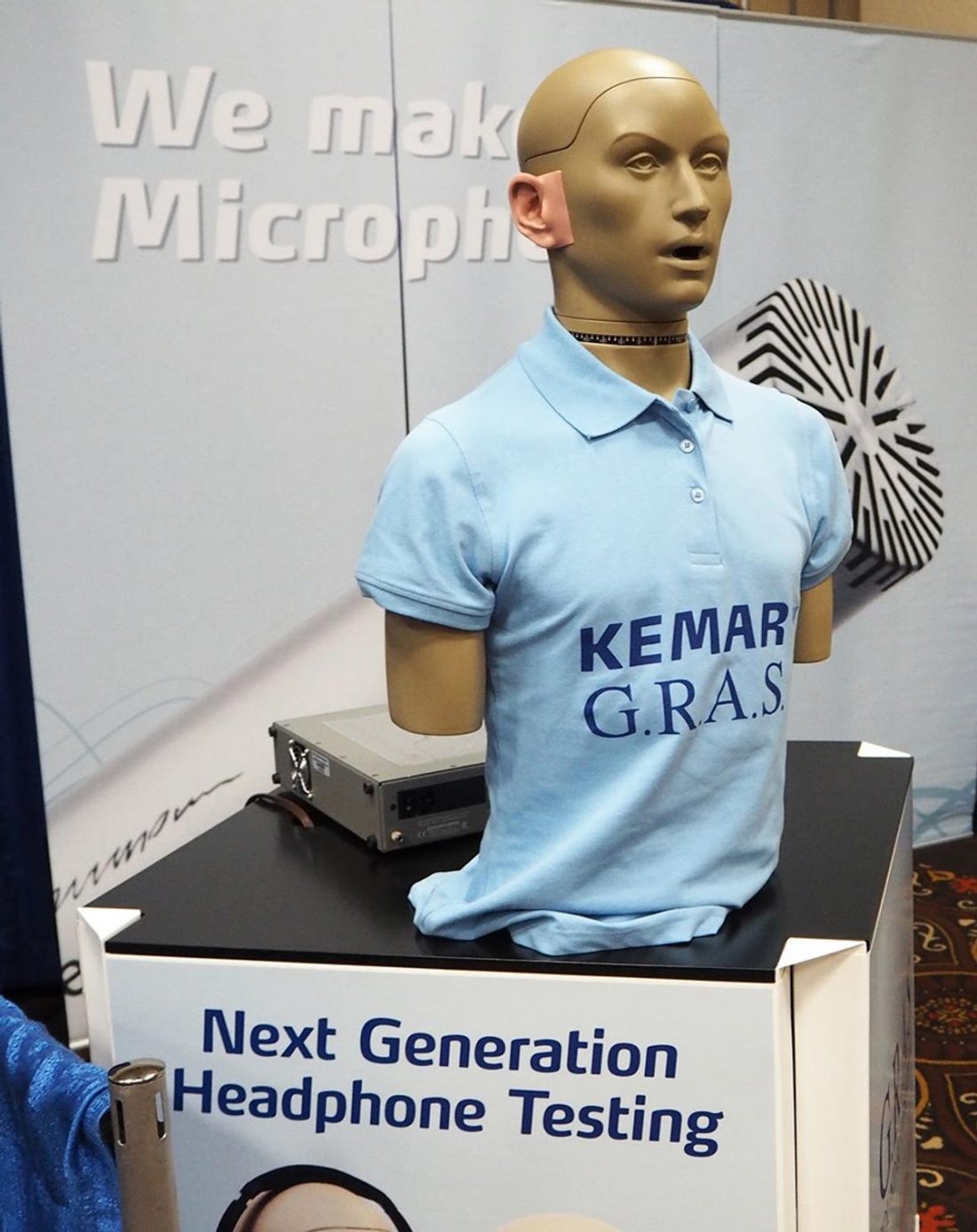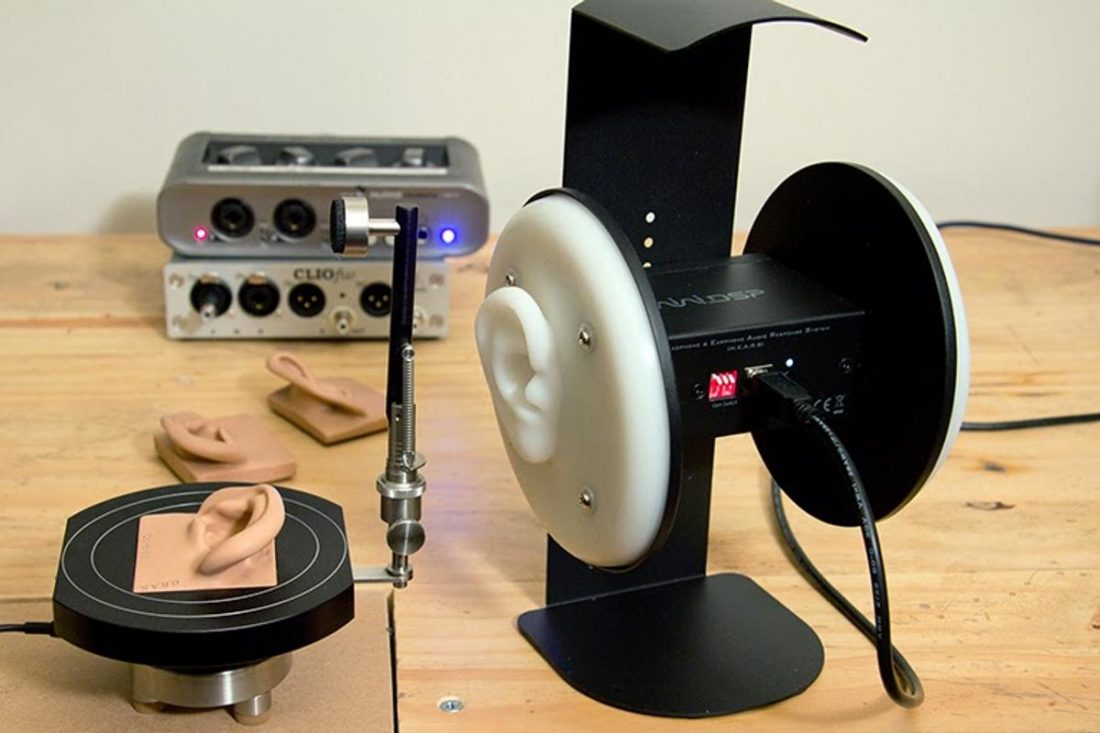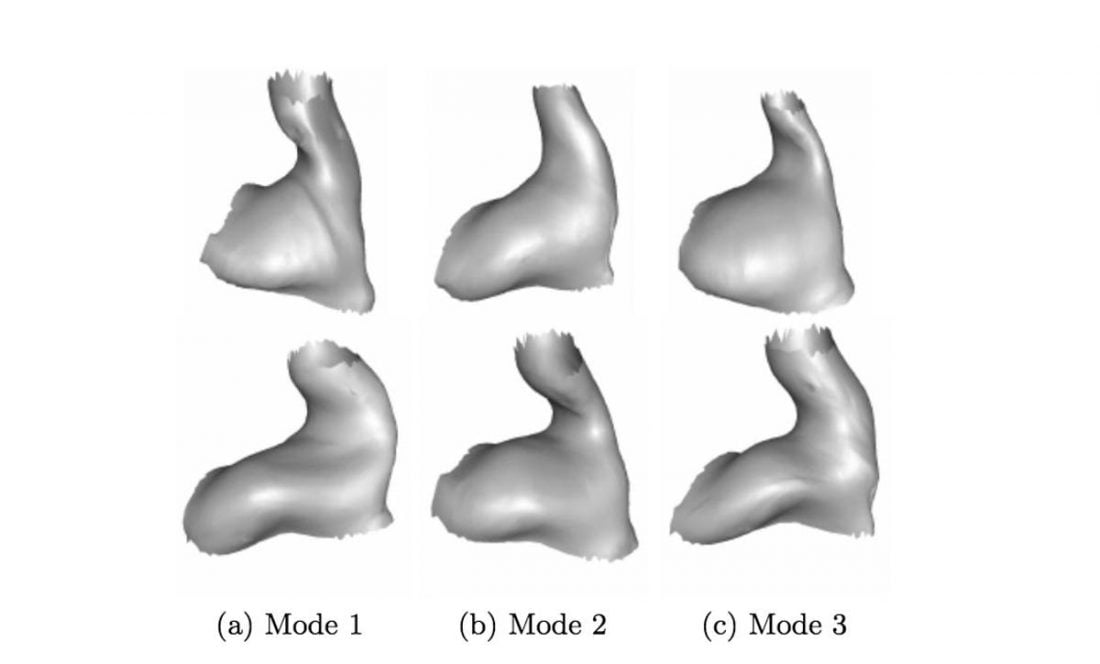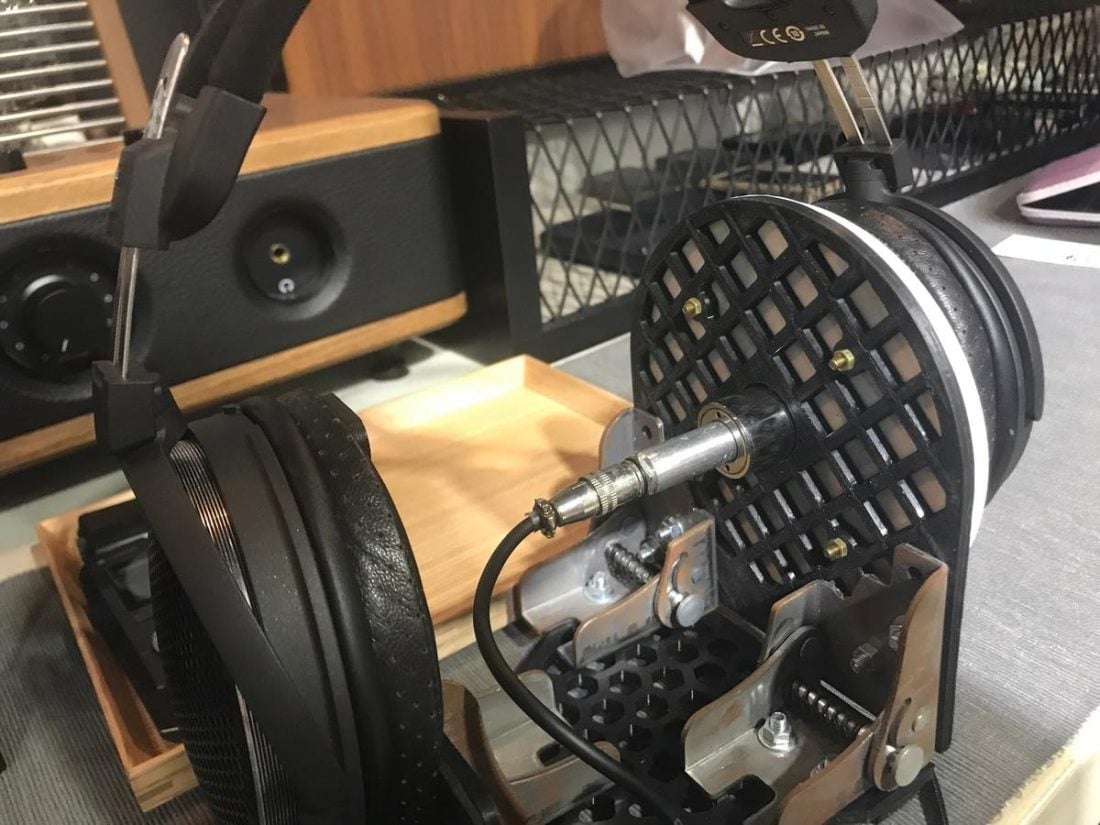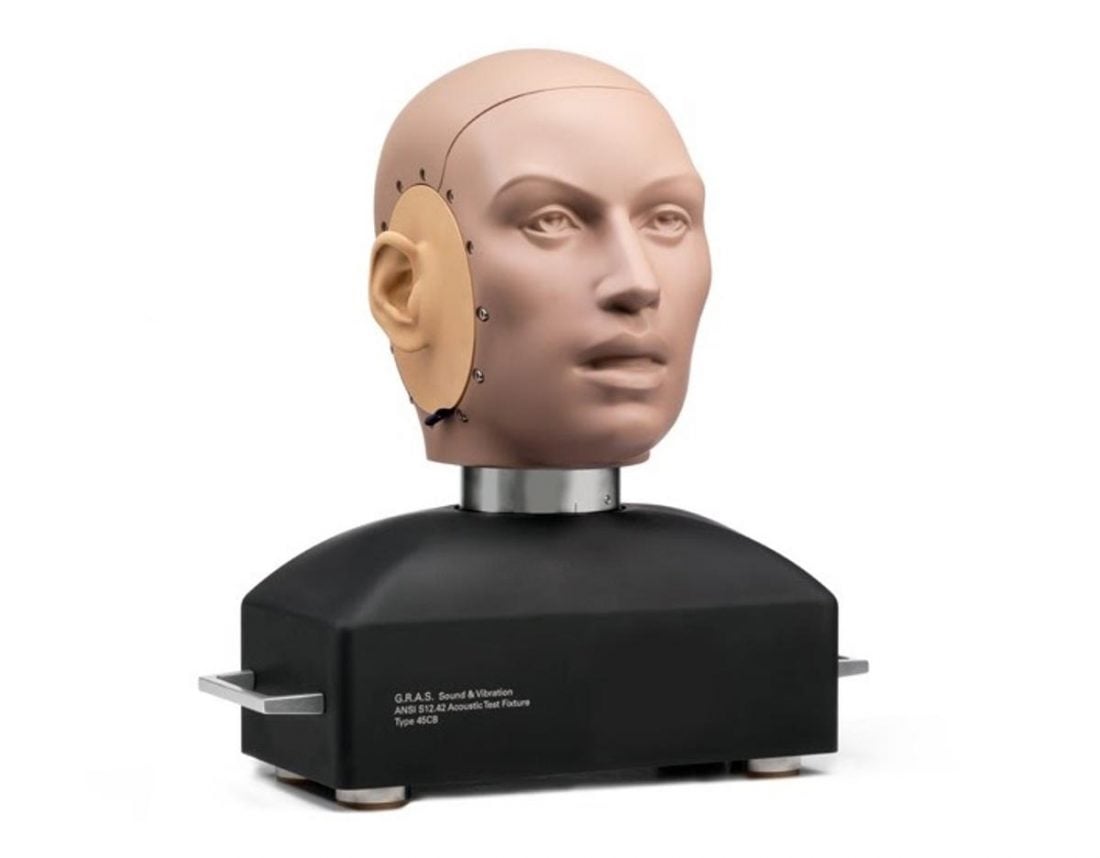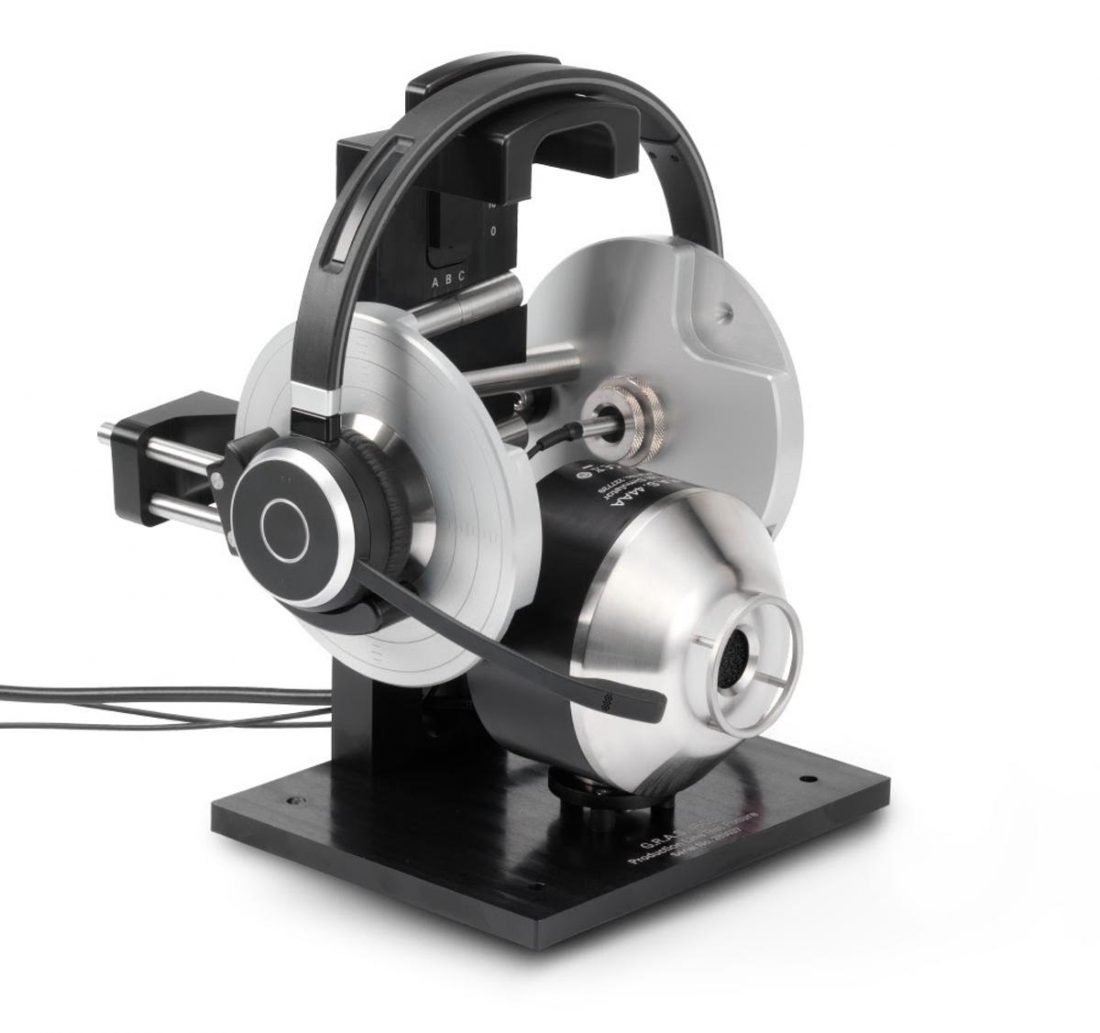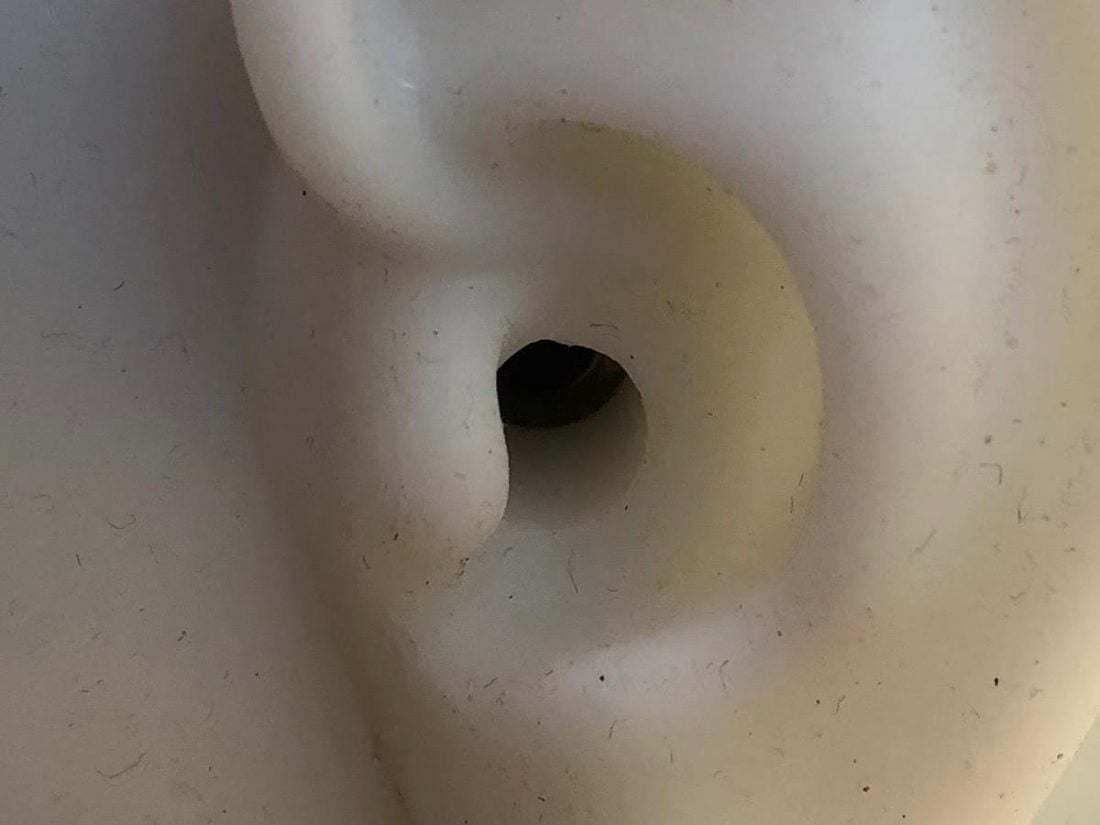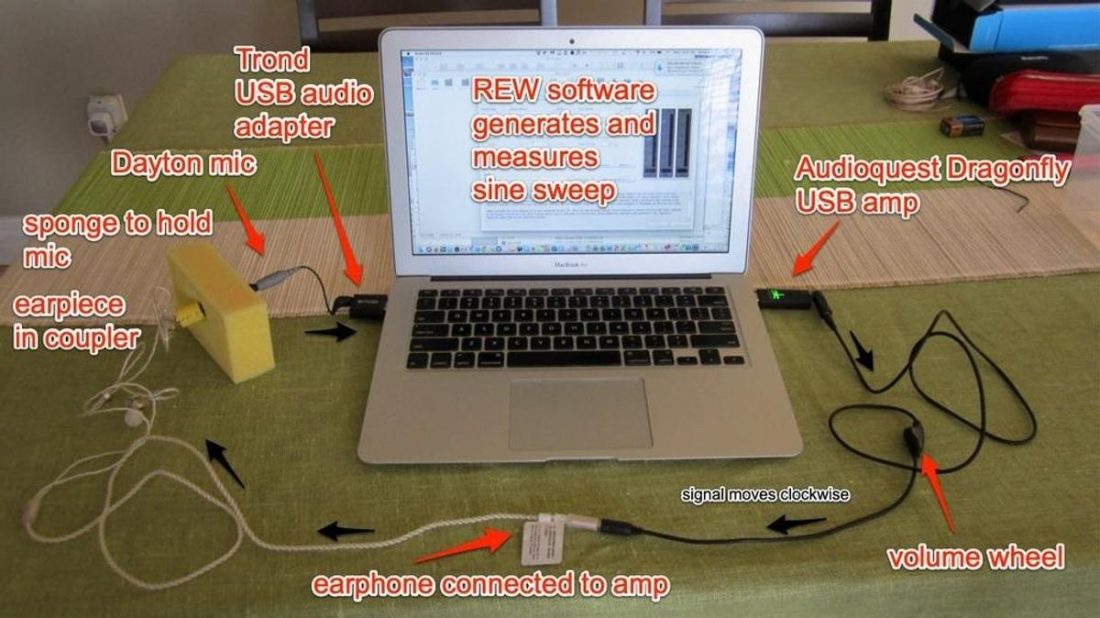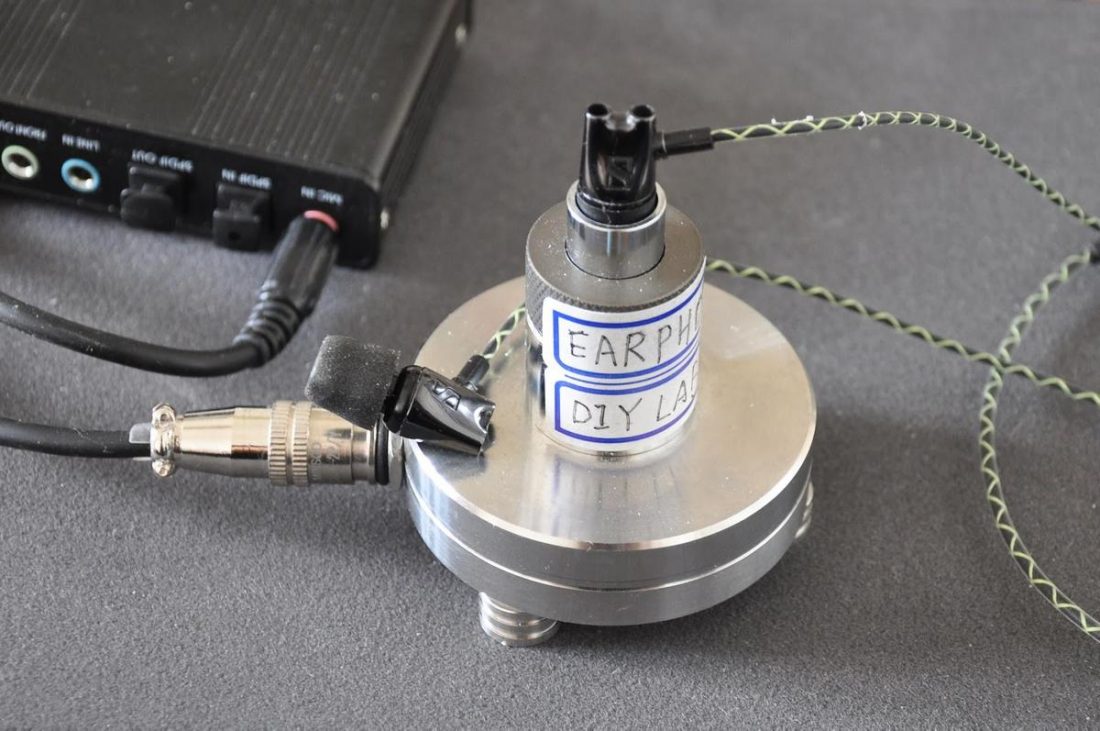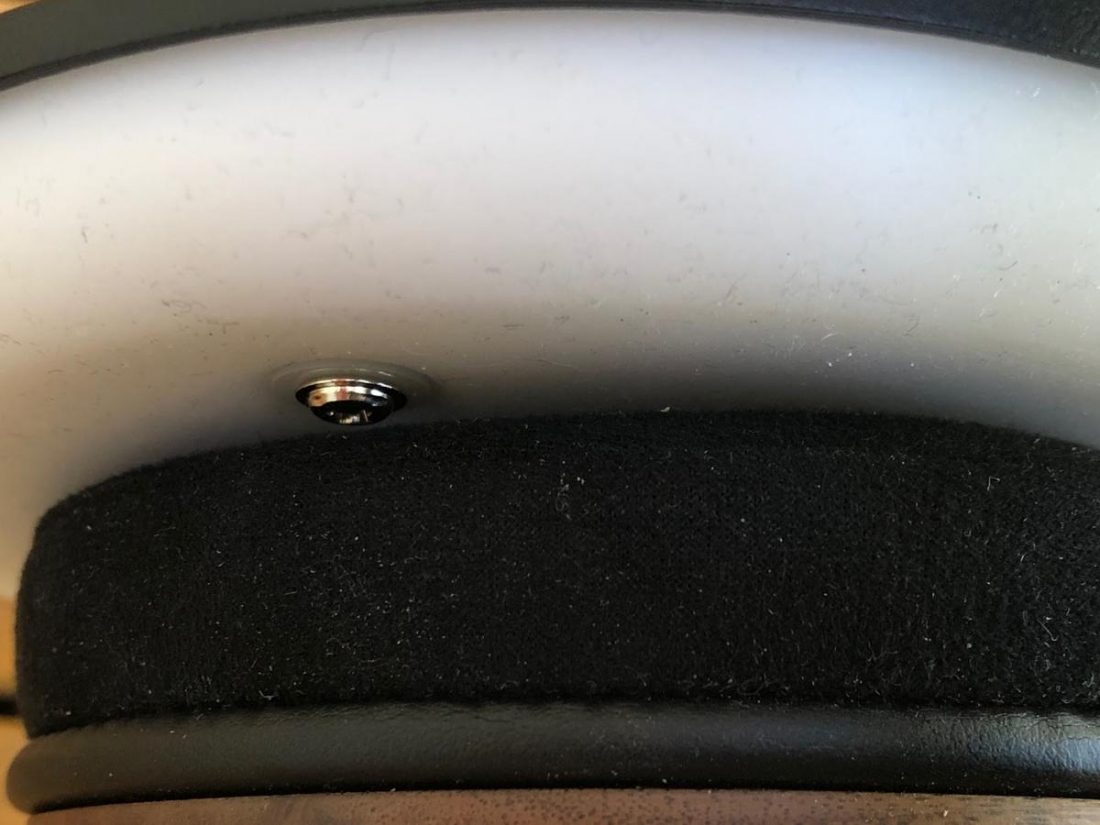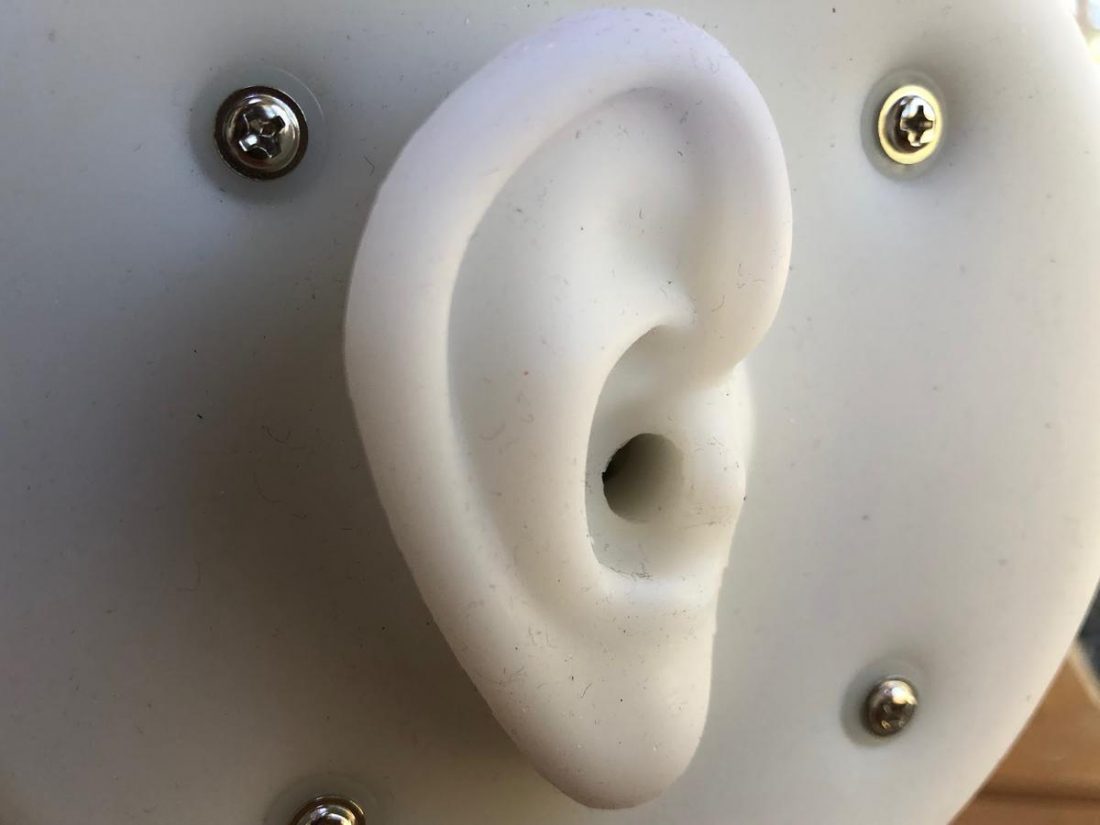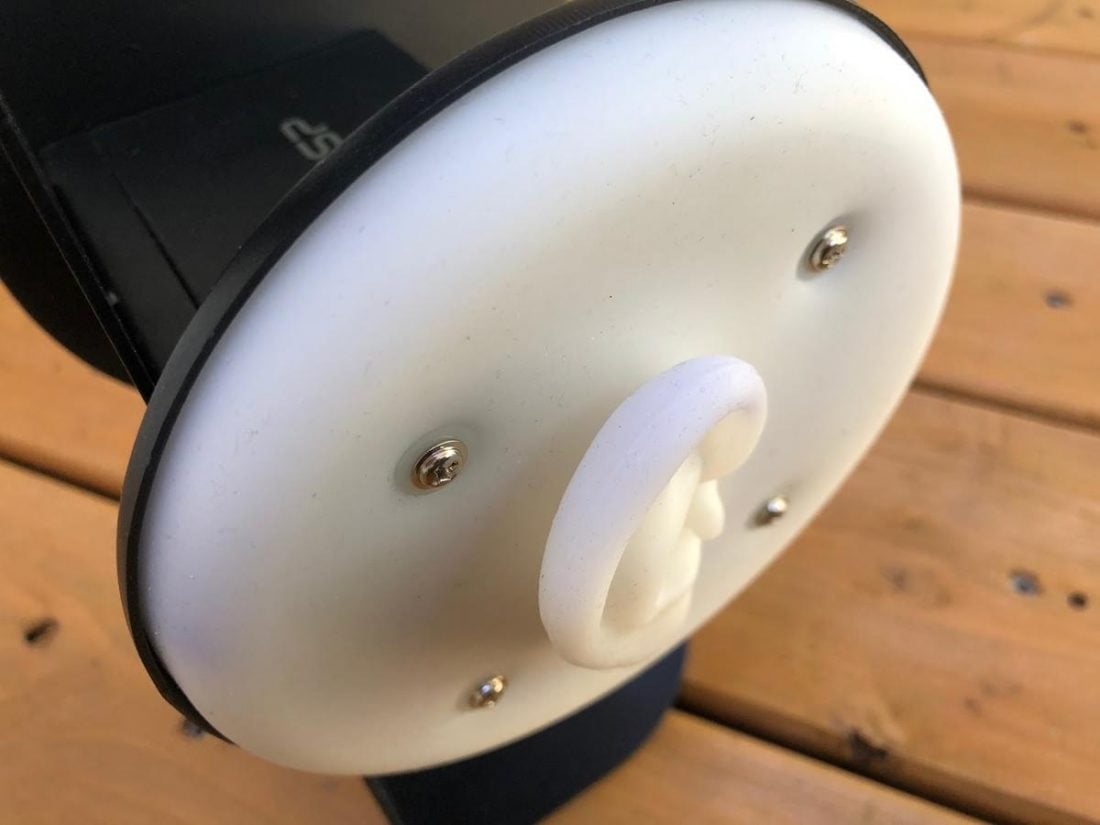Headphonesty recently purchased a miniDSP EARS device to gather measured data from the headphones (and IEMs) we review. This article is intended to be a discussion of the EARS, and to provide an overview of what it is and what it does. It also serves to explain the decision to use the EARS device and to highlight its inherent strengths and weaknesses. A companion article presents the technical details, the physical setup, and the settings within the software that we will use at Headphonesty when measuring headphones. If you’d like to compare your results to ours, I strongly suggest you copy our settings in that article for your own EARS device.
Quick Links
What Is the miniDSP EARS? Anatomy of a Headphones Measurement Rig Headphone Testing and Measurement Hardware Comparison General Difficulties with Measuring Headphones Conclusion
What Is the miniDSP EARS?
According to the device itself, we should probably be calling it the HEARS, rather than the EARS. Proudly written on the front is “Headphone & Earphone Audio Response System (H.E.A.R.S.).” I’m assuming due to some change of heart within miniDSP’s marketing department, the ‘H’ is now considered to be silent. However, the miniDSP website calls it EARS, and for the purpose of this article, so shall I. In essence, the EARS is a tool to measure headphones. It is a testing rig that uses microphones fitted in simulated ears to record data via a computer connection. Test tones are played through a pair of headphones fitted on the device. The EARS comes pre-assembled as a unit consisting of a pair of molded silicone ears with embedded microphones, a rectangular USB interface box holding the ear plates, and a stamped steel stand. The stand is rounded on top to approximate the top of a human head and to hold the headphone band. The USB interface box connects to a computer with a standard USB A-B printer cable and no driver is needed for use in Windows, Linux, or Apple OS. The USB interface powers the EARS and captures the input from the microphones. The EARS is one of several commercial headphone measurement rigs on the market. It holds the distinction of being the most affordable (by a LARGE margin).
Anatomy of a Headphone Measurement Rig
Most headphone testing rigs consist of 3 parts: The stand may simply function to hold the interface surfaces and the headphones. Stands on more expensive units can be far more substantially built and are often designed to dampen or eliminate any unwanted acoustic noise or vibration. The most (creepily) realistic testing rigs commercially available are head and torso simulators (HATS). As the name states, they are specially designed mannequins that mimic an actual human head and upper body. HATS may be known as an artificial head or Kunstkopf and may also be also used as a method of recording used to generate binaural recordings. The testing rig may feature one or two interface surfaces and associated microphones. Testing rigs with one surface are single-sided and only able to measure one headphone channel (the headphones must be reversed to complete measurements). The interface surface is probably the most contentious part of testing rigs. While some DIY solutions may feature simple ‘flat plates’, most commercial measurement rigs attempt to mimic the acoustic properties of an ‘average’ head and ears (pinnae and ear canal) with simulated silicone ears. The quality of the simulated ears varies in both shape and material. A real human ear is not of uniform hardness in all parts because it is made of stiff cartilage covered by soft tissue. However, most simulated ears are silicone-based and consist of a single density throughout. Also, you must keep in mind, no two ears are the same, and the shape and size of the ear canal will also vary dramatically between actual humans. So, it’s difficult to reach an agreement on what an ‘average’ ear is actually shaped like.
Headphone Testing and Measurement Hardware Comparison
General Difficulties with Measuring Headphones
The vast variety of densities, shapes, and sizes creates almost infinite variations between ears and as a result, between test rigs. It’s incredibly difficult to determine (or even agree upon) what the ideal (or average) pair of ears looks like or how it actually measures. How does a company decide what shape and density its simulated ears should be? Most companies seem to take the route of testing many people and settling on an average. As a result, there is no single consensus on what the ideal measured frequency response of a pair of headphones should be. In a perfect world, all test rigs would conform to a single universally accepted standard. That way measurements would be (more) comparable across different testing apparatus. In practice, we can only really characterize frequency response in conjunction with a particular test fixture. In fact, the standardization of frequency measurement is far from agreed upon. The issues discussed above are magnified when considering measuring IEMs rather than full-sized headphones. The shape, size, and material of the simulated ear canal become even more crucial as it even more greatly impacts recorded measurements. One attempt at standardization is the common International Electrotechnical Commission (IEC) 60318, which only covers the range up to 8 kHz. IEC 60711 covers up to 10 kHz but is oriented to in-ear (insert) headphones, and additionally, the fixtures compliant to that standard have the disadvantage of a built-in frequency response peak at 13.5 kHz.” – Audio Xpress
EARS Limitations with Measuring IEMs
The miniDSP EARS is not an ideal choice for IEM measurements. The shape and size of the simulated ear canal are not natural. The EARS artificial ear canal is quite short and cylindrical in shape, and this means the possible range of insertion depths is quite limited. Unfortunately, there is no attempt to simulate the acoustic effects of the ear entrance or canals. We must either accept this or abandon the EARS for this purpose. Another popular option is to create (sometimes expensive, sometimes questionable) DIY measurement devices that are difficult (or perhaps impossible) to standardize against multiple reviewers. These DIY devices may also simply provide ‘different’ rather than ‘better’ results. The EARS lack of a standardized pinna and no occluded-ear simulator results in results that are quite different from measurements made with industry-standard rigs and creates a peak at 4.5 kHz due to canal response. Again, the important factor comes down to the ability to make repeatable and consistent measurements using the EARS. Internal consistency means we can, at least, compare our own measurements of different IEMs to each other, rather than to measurements done by other reviewers using different measurement rigs. There’s also the same relatively steep treble roll-off seen in the HEQ curves. Of course, different insertion depths or tip geometries will change these features greatly, which adds another layer of measurement uncertainty.” – AudioXpress
EARS Limitations with Measuring Headphones
Measurements of full-size headphones are perhaps less problematic than IEM measurement, but that doesn’t mean they are entirely perfect. Much of the issue comes down to the seal that can be achieved between the headphone earpads and the test rig interface surface. A weak seal leads to bass measurements appearing abnormally low. Larger circumaural (over-ear) headphones (that surround the silicone ears) seem to work the best. However: In order to attempt to guarantee identical test rigs between multiple reviewers, I suggest that we do not replace these screws but do our best to minimize gaps with placement and adjustment of the headphones on the rig. The small and non-adjustable width of the EARS (significantly smaller than the average head distance from ear to ear) is also an issue. This reduces clamp force and pad compression of the headphones and allows the seal to potentially be less tight than desired. The seal may be adjusted by applying pressure to the headphones either by hand or using elastic bands to improve the seal. The vertical distance from the top of the EARS to the microphones is adjustable, although I don’t think it is necessary to change this distance, as it seems well within an average headphones’ adjustable headband range. It also doesn’t seem to have any impact on the ear pad seal. On-ear headphones are at the mercy of the stiff silicone ears that do not conform like actual human skin. Again, this will impact the quality of the seal as it is entirely dependent on the interaction between the ear pad and the silicone ear. The EARS lightweight, stamped sheet metal construction is not heavy enough to provide the same acoustic isolation as more expensive measurement rigs. Overall this very likely has minimal impact on measurement results, but it is worth mentioning. All these factors emphasize the need for making multiple measurements, discarding erroneous measurements, and averaging the results to determine the best possible frequency response graph results.
Conclusion
Is the miniDSP EARS the perfect test and measurement tool? Nope, but it sure is the affordable one. The above statements may be all the conclusions we need. We’re going to wade deep into the murky waters of headphone measurement with eyes wide open. In an ideal situation, would we choose the EARS? Probably not. But (as they say) “it is what it is” and we’re going to make the most of it! The miniDSP EARS works as intended. It has its own unique set of quirks and realities. Certainly, those with mega-buck measurement rigs are likely to turn up their nose and dismiss any results generated by the lowly EARS device. However, the affordable price means that there will continue to be more and more EARS rigs in the hands of enthusiasts, and it’s the enthusiasts who pay attention to headphone measurements. The next step is to determine a stringent set of standards for performing measurements. These standards are necessary to minimize the limitations of the EARS. By widely sharing our standards, owners with EARS devices will be able to compare our results to their own. Results are only comparable between the same device using the same set of standards. So, open your eyes, hold your breath, and take a leap of faith with us while we say ‘aye’ to the EARS.
